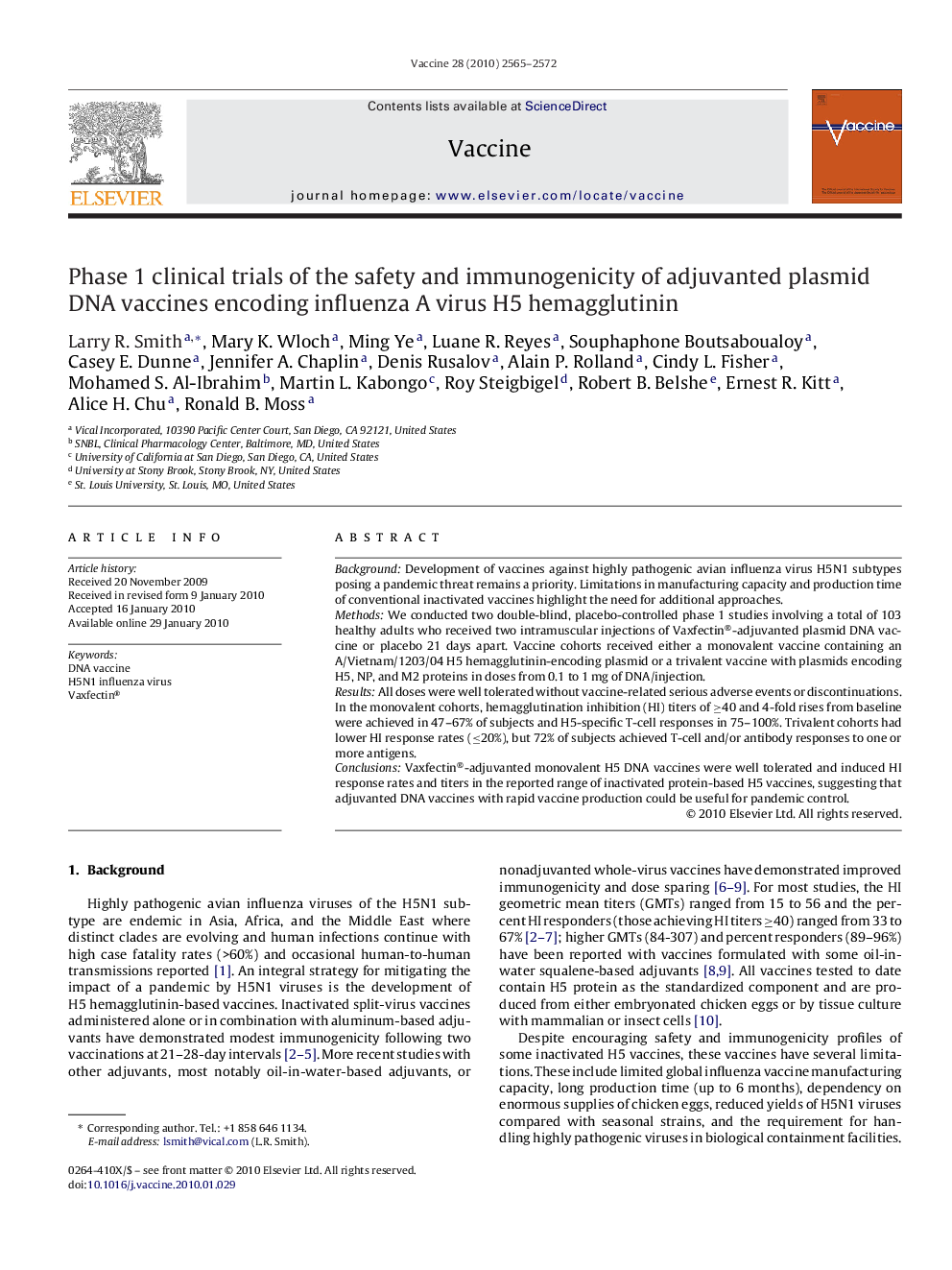| Article ID | Journal | Published Year | Pages | File Type |
|---|---|---|---|---|
| 2406126 | Vaccine | 2010 | 8 Pages |
BackgroundDevelopment of vaccines against highly pathogenic avian influenza virus H5N1 subtypes posing a pandemic threat remains a priority. Limitations in manufacturing capacity and production time of conventional inactivated vaccines highlight the need for additional approaches.MethodsWe conducted two double-blind, placebo-controlled phase 1 studies involving a total of 103 healthy adults who received two intramuscular injections of Vaxfectin®-adjuvanted plasmid DNA vaccine or placebo 21 days apart. Vaccine cohorts received either a monovalent vaccine containing an A/Vietnam/1203/04 H5 hemagglutinin-encoding plasmid or a trivalent vaccine with plasmids encoding H5, NP, and M2 proteins in doses from 0.1 to 1 mg of DNA/injection.ResultsAll doses were well tolerated without vaccine-related serious adverse events or discontinuations. In the monovalent cohorts, hemagglutination inhibition (HI) titers of ≥40 and 4-fold rises from baseline were achieved in 47–67% of subjects and H5-specific T-cell responses in 75–100%. Trivalent cohorts had lower HI response rates (≤20%), but 72% of subjects achieved T-cell and/or antibody responses to one or more antigens.ConclusionsVaxfectin®-adjuvanted monovalent H5 DNA vaccines were well tolerated and induced HI response rates and titers in the reported range of inactivated protein-based H5 vaccines, suggesting that adjuvanted DNA vaccines with rapid vaccine production could be useful for pandemic control.
